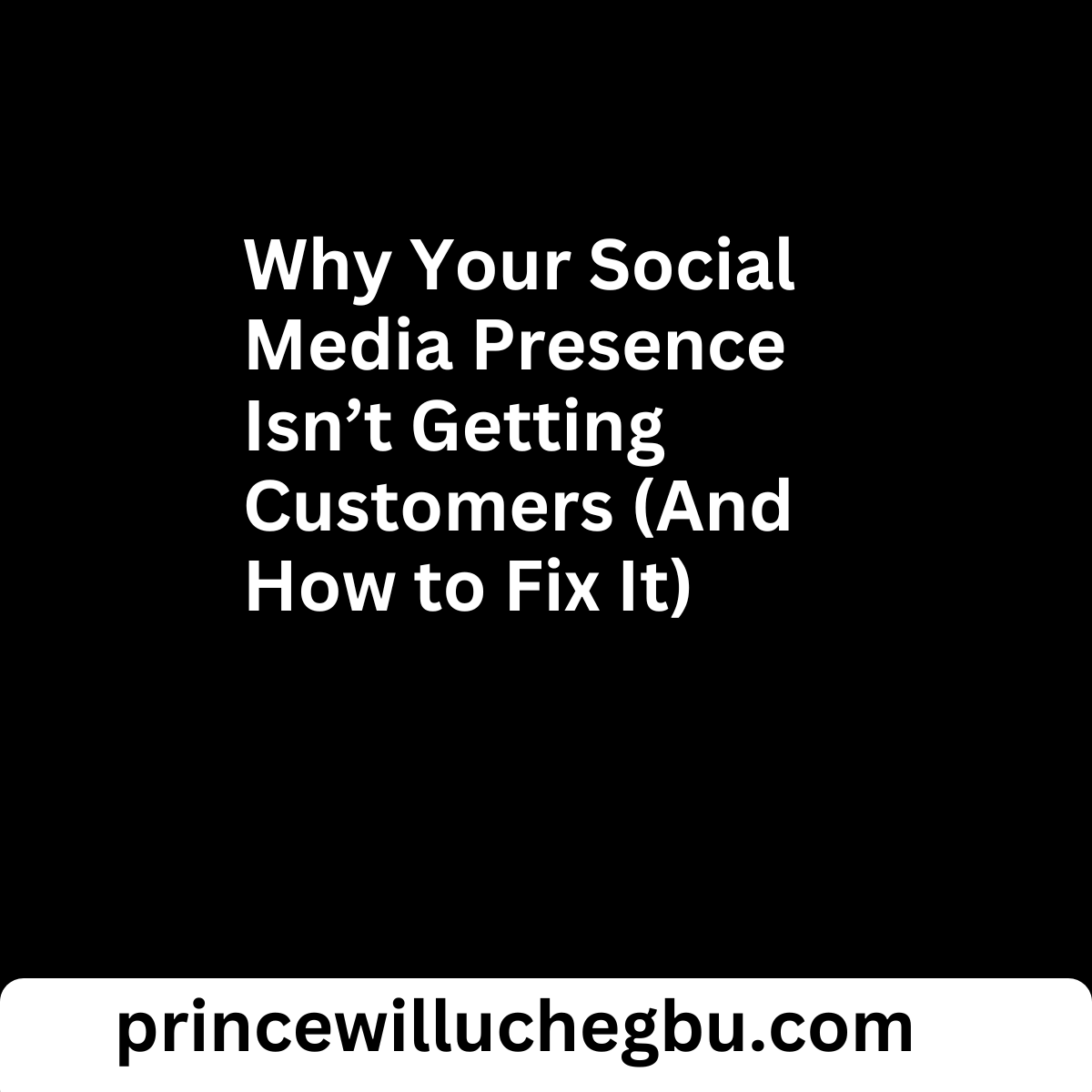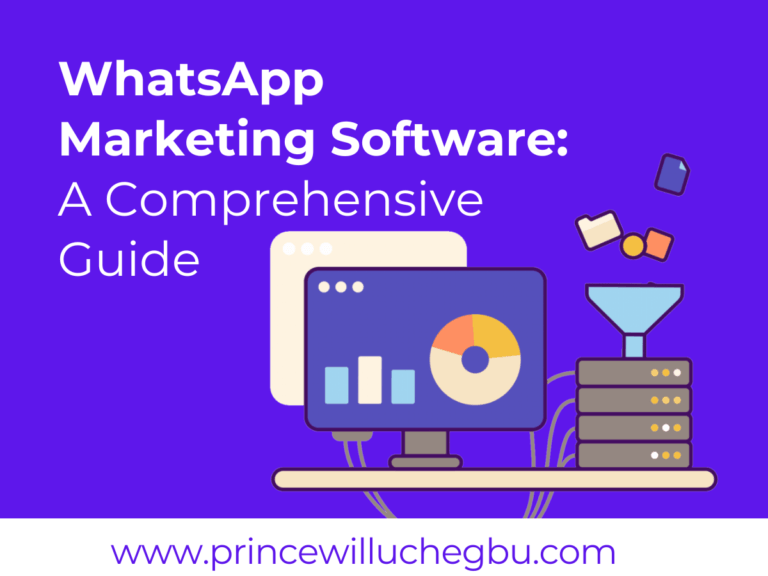Why Your Social Media Presence Isn’t Getting Customers (And How to Fix It)
Why Your Social Media Presence Isn’t Getting Customers (And How to Fix It)
Having a presence on social media doesn’t automatically mean you’ll attract customers or clients. In fact, that’s a common misconception many people have when exploring social media spaces for their business. They believe that as long as they show up, clients will follow.
But social media doesn’t reward mere presence—it rewards value. It’s about solving problems and providing answers to questions that your target audience didn’t even know they had. That’s what makes the difference between those who thrive and those who struggle.
You see, the moment you sign up on any social media platform—whether it’s Facebook, Instagram, LinkedIn, or even TikTok—you’re stepping into a different world filled with distractions.
People are bombarded with countless posts, videos, and images every single day.
For them to notice you, and even more importantly, engage with you, you must stand out. And standing out isn’t just about having the best graphics or the most eye-catching captions. It’s about offering value. Solving problems.
When it comes to business, people don’t follow brands for the sake of it. They follow those that add value to their lives or businesses.
And what is value, you ask?
Value is the solution you provide to a pressing need or challenge.
If you are not solving a problem, then you’re just another account in a long list of others they scroll past without a second thought. That’s why businesses that succeed on social media aren’t just active; they’re problem solvers. They focus on what they can give their audience, not what they can get from them.
So, whenever you feel frustrated that you’re not attracting customers or that your social media strategy isn’t converting into sales, take a step back. Ask yourself, “Am I solving a problem for my audience?” If the answer is no, then it’s time to reevaluate your approach. A quick glance at your content will reveal the truth. Are you simply posting for the sake of posting, or are you genuinely addressing the needs of your audience?
Here’s the thing: social media isn’t about you. It’s not a stage where you constantly talk about yourself, your business, or your latest ventures. It’s about the people on the other side of the screen—the potential customers. They are asking, “What’s in it for me?” And your content needs to answer that question clearly and effectively.
Every time you post, you need to think, “How does this help someone else? What pain point does this address?”
Take, for example, a social media manager. Let’s say that’s your role, and your job is to help businesses grow their presence online. You have a wealth of knowledge about strategies, algorithms, and how to optimize content for maximum reach. But if all you do is post photos of your last church program or pictures from your vacation, you’re missing the mark. While there’s nothing wrong with sharing personal moments, you need to be strategic. If your timeline is filled with content that doesn’t align with your expertise, how do you expect potential clients to take you seriously?
It doesn’t work that way.
Your social media account should reflect what you do and how you can help others.
If you claim to be a social media expert, then your feed should demonstrate your knowledge. It should be a showcase of your skills—your ability to create engaging content, run effective ads, or grow a following organically.
Your timeline should be filled with tips, strategies, case studies, and results that show you know what you’re doing. That’s how you attract customers. That’s how you build trust. When someone stumbles across your profile, they should immediately see that you can solve their problem.
This applies to every industry. Whether you’re a real estate agent, a beauty influencer, a life coach, or a digital marketer, your content should reflect your expertise.
If you’re a real estate agent, don’t fill your feed with unrelated memes or endless motivational quotes. Yes, those have their place, but your main focus should be showcasing properties, offering advice on the market, and sharing insights that only someone with your knowledge would know.
Give value that’s aligned with your brand.
Show your audience that you can solve their problem, which, in this case, might be finding their dream home or understanding the market better.
Read Also: Simple Hack To Create Irresistible Content That Drives Sales
Similarly, if you’re in beauty, don’t just post selfies or product shots. Teach your audience how to use the products. Share tutorials, offer skincare advice, and talk about beauty trends. Solve the problems your audience faces, like how to properly do a smoky eye or which skincare routine works best for different skin types.
When you provide value, people will naturally gravitate towards you because they trust your expertise. They see you as a solution to their problem, not just another face in the crowd.
Now, don’t get me wrong. Personal content isn’t bad. It humanizes you, makes you relatable, and helps you connect with your audience on a deeper level. But you must have a balance.
You must remember why you’re on social media in the first place—to build a brand and grow your business. If the majority of your posts are about your personal life with no correlation to your expertise, you’re not providing value. You’re not solving a problem. You’re just another voice in the digital noise.
Why Your Social Media Presence Isn’t Getting Customers (And How to Fix It)
So, let’s break it down practically. You want customers from social media, right? Start by doing this:
- Define your audience’s problem: What are the pain points your audience faces in your industry? Write them down. Understand their struggles.
- Create content that solves those problems: Every piece of content you create should be geared towards solving these pain points. If you’re a digital marketer, teach them how to increase their engagement or optimize their ad spend. If you’re a fitness trainer, give them tips on how to stay motivated or how to improve their diet.
- Be consistent: Solving a problem once isn’t enough. You have to be consistent in providing value. Make it a habit. When people know that they can consistently get valuable insights from you, they’ll keep coming back.
- Mix in personal content strategically: As I mentioned earlier, personal content is still important, but use it sparingly. Show your human side, but always tie it back to your expertise. For instance, if you’re at an industry event, post about it and share your key takeaways. If you’re on vacation, relate it to how you’re staying productive or how you’re balancing work-life.
Final Thought
Your social media strategy must go beyond just showing up. It’s about solving problems and offering value to your audience. Customers don’t just come to you because you exist online—they come to you because you’ve shown them that you can help them. So the next time you’re wondering why your social media efforts aren’t converting into customers, don’t blame the platform. Look at the value you’re bringing. Look at how you’re solving problems. That’s the real game-changer.







